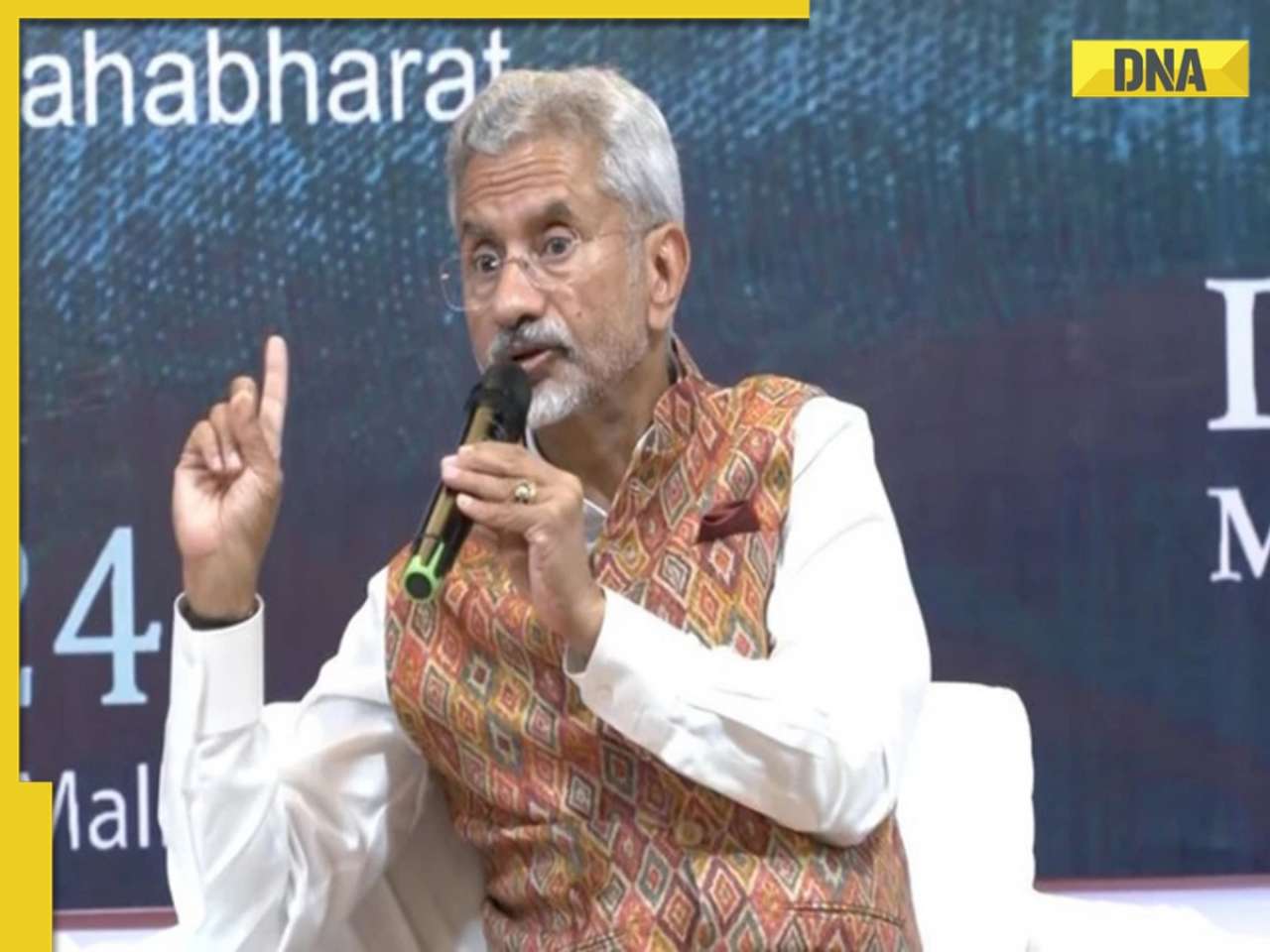“India’s attitude towards its diaspora is, quite frankly, pretty pathetic.” For instance, Indian-Americans are the richest ethnic community in America, but they’re just not tapped into by the Indian state.
HONG KONG: A short story can sometimes encapsulate a big message. Tarun Khanna, Jorge Paulo Lemann Professor at the Harvard Business School, has a brief narrative that succinctly sums up the larger reality of India and China, particularly the differences that characterise and define the two countries.
In 2003, Khanna and then HBS professor Yasheng Huang co-authored an article on ‘Can India Overtake China?’, which was published in Foreign Policy magazine. “It was immediately banned in China — because it was partly critical of China (as it was about India as well),” Khanna says. But curiously, members of the Chinese diplomatic corps — who had read translations of the article — turned up at Harvard to understand the authors’ rationale for their criticism of Chinese economic policy.
But the response in India, notes Khanna, was diametrically opposite. “It was disseminated everywhere, and newspapers reprinted it, but there was no intelligent commentary on it and no informed discussion on it.”
Nobody from the Indian government made a similar effort to reach out to the authors, and one senior government minister actually admitted that he had not read the paper himself but was “appointing a commission to read it”.
To Khanna, these contrasting responses show up the quintessential differences between India and China — in terms of the information environment in the two countries. “These differences relate to the very nature of rights, of what is legitimate, what individuals can aspire to, and who gets to know what, when, where and why.”
But, he adds, they also say something about the efficiency of the state in China — and the lack thereof in India. “The things that are spectacularly impressive in China — in terms of state-led action and the ability of the state to redirect priorities that mandate attention —-are the things that are missing in India.” The state, says Khanna, is “extremely inefficient in India... The system is just not calibrated to promote economic efficiency.”
These differences may account for why “India is terrible at what China is good at, and Why China may never be able to catch up in the areas that India is good at.” And these differences manifest themselves in many areas: when private interests conflict with the public interest, for instance, China tends to “over-err on the side of public interest, whereas India over-errs on the side of private property.”
There are, he notes, costs and benefits to both approaches, and “it’s hard to say that one is better than the other.”
In his new book, Billions of Entrepreneurs: How China and India are Reshaping Their Futures and Yours, Khanna brings out another striking contrast. In China, the government is often the entrepreneur, and the growth model it chose was driven by foreign direct investment (FDI), initially focussed on the Chinese diaspora worldwide. The Cultural Revolution, a decade of social and economic turmoil from 1966, “wiped China’s economic slate clean, and the only way to get economic development jumpstarted was to go and ask overseas Chinese to invest.”
Khanna contrasts that with “the nonsensical view” in India towards overseas investment - and its relations with its diaspora.
“India’s attitude towards its diaspora is, quite frankly, pretty pathetic.” For instance, Indian-Americans are the richest ethnic community in America, but they’re just not tapped into by the Indian state.
It may be, he says, that since India (mercifully) never underwent anything like the Cultural Revolution in China, its demand for outside investment was never as high. But the more prosaic reason “is that it comes from protectionism and rent-seeking behaviour.”
In China, however, this ready embrace of foreign capital came with a downside: it made it difficult for truly private indigenous local enterprises to build their business. “Think about a graduate from Tsinghua University, looking to build a private company in China from scratch. Contrast that with someone who graduated from an IIT... It’s much, much easier, given the local ecosystem and the information environment and the protection of private property rights, for the Indian entrepreneur, to succeed.”
On the other hand, says Khanna, it’s much easier for that Chinese graduate to get a job in any of the Fortune 500 companies, most of which have offices in China. “Which is why most multinationals, which are used to having the welcome mat laid out for them in China, say they face a much tougher road in India.”
This lack of inherent entrepreneurial strength in China shows up in other ways, notes Khanna. “Look at Merger & Acquisitions deals. Most of the M&A coming out of China are very large deals from resource-intensive, large state-owned enterprises putting down tens of billions of dollars to buy equally large companies elsewhere — and, more often than not, making a hash of it.” It’s not surprising, he says: you cannot run before you learn to walk.
India companies have had a better record on this count, whereas Chinese companies still need to learn the idiom of international commerce.
Similarly when it comes to corporate governance, “Indian companies are light years ahead of Chinese companies. That ties in with the observation that the equity markets in India are light years ahead of their Chinese counterparts.” Open governance, says Khanna, comes from a need to communicate to outside investors and outside constituents. Chinese state-owned enterprises really feel no need to take their communication function seriously.
Yet, despite all their differences, China and India are on the cusp of a hard-headed, symbiotic relationship that will be driven by economic rationale, says Khanna. A lot of that is already happening, and in the most unlikely sectors — microenterprise, life sciences, biotechnology.
Many Indian companies have a pretty well-articulated China strategy (which fits in with their global strategy), and many others are in the process of evolving one. And although India has in recent history been “irrelevant to China, I think you’ll see that change quite rapidly,” says Khanna. “It used to be that India never made the front page of Chinese newspapers. That’s not the case any more, and every so often we see different success stories in India making it. That’s a small indication of how India is moving from irrelevance to relevance in the Chinese worldview.”
Part of the barrier, however, is on the Indian side, notes Khanna. “When the likes of Huawei try to invest in India, there’s a backlash...Now, some of it may be legitimate questions being raised, but my own sense is that these legitimate question can be dealt with and dispensed with reasonably efficiently.”
In Khanna’s estimation, the barriers to a better Sino-Indian economic relationship are all in the mindset. “There is no other example on the world stage of two countries that are this large and this proximate to have no economic relationship.” Policy debates on China-India relations tend to focus excessively on border conflicts, nuclear arms and blue-water navies. “These are all real issues, of course, but I don’t see why this should be the only topics of discussion.”
As China and India interact, a measure of “societal recalibration” will perhaps happen in both countries, says Khanna. “The way that recalibration will happen in India is in a noisy way through the political process; whereas in China it will happen through a debate within the Communist Party... I worry a little bit about China’s ability to embrace a diversity of views — which are contrary to the perceived interest of the Communist Party. Its current mechanism to accommodate those views is to expand its membership. Which is why people who traditionally would have anything to do with the party are
now its members. But it has its limits...”
Although Khanna says he doesn’t “favour” any one model - between the Indian and Chinese models - he concedes to a “greater resonance” with the Indian way. “I’m a product of private enterprise, so when I see private enterprise, I understand it.” So where would he his money? “If I had to put my money down, I would put in China for the next 10 years. Beyond that I would put it in India.”
venky@dnaindia.net
![submenu-img]() Meet IIT-JEE topper with AIR 1, son of government school teachers, he went on to pursue...
Meet IIT-JEE topper with AIR 1, son of government school teachers, he went on to pursue...![submenu-img]() Salman Khan house firing case: One more Lawrence Bishnoi gang member arrested by Mumbai Police
Salman Khan house firing case: One more Lawrence Bishnoi gang member arrested by Mumbai Police ![submenu-img]() Mukesh Ambani to host Anant-Radhika's second pre-wedding function: Trip to start from Italy with 800 guests and end in..
Mukesh Ambani to host Anant-Radhika's second pre-wedding function: Trip to start from Italy with 800 guests and end in..![submenu-img]() Driver caught on camera running over female toll plaza staff on Delhi-Meerut expressway, watch video
Driver caught on camera running over female toll plaza staff on Delhi-Meerut expressway, watch video![submenu-img]() 'If you come and do something here...': EAM S Jaishankar on India's 'message' against terrorism
'If you come and do something here...': EAM S Jaishankar on India's 'message' against terrorism![submenu-img]() Meet IIT-JEE topper with AIR 1, son of government school teachers, he went on to pursue...
Meet IIT-JEE topper with AIR 1, son of government school teachers, he went on to pursue...![submenu-img]() TN 11th Result 2024: TNDGE Tamil Nadu HSE (+1) result declared, direct link here
TN 11th Result 2024: TNDGE Tamil Nadu HSE (+1) result declared, direct link here![submenu-img]() Meet doctor who cracked UPSC exam with AIR 9 but didn’t became IAS due to…
Meet doctor who cracked UPSC exam with AIR 9 but didn’t became IAS due to…![submenu-img]() TN 11th Result 2024 to be declared today; know how to check
TN 11th Result 2024 to be declared today; know how to check![submenu-img]() Meet man who worked as coolie, studied from railway's WiFi, then cracked UPSC exam to become IAS, secured AIR...
Meet man who worked as coolie, studied from railway's WiFi, then cracked UPSC exam to become IAS, secured AIR...![submenu-img]() DNA Verified: Is CAA an anti-Muslim law? Centre terms news report as 'misleading'
DNA Verified: Is CAA an anti-Muslim law? Centre terms news report as 'misleading'![submenu-img]() DNA Verified: Lok Sabha Elections 2024 to be held on April 19? Know truth behind viral message
DNA Verified: Lok Sabha Elections 2024 to be held on April 19? Know truth behind viral message![submenu-img]() DNA Verified: Modi govt giving students free laptops under 'One Student One Laptop' scheme? Know truth here
DNA Verified: Modi govt giving students free laptops under 'One Student One Laptop' scheme? Know truth here![submenu-img]() DNA Verified: Shah Rukh Khan denies reports of his role in release of India's naval officers from Qatar
DNA Verified: Shah Rukh Khan denies reports of his role in release of India's naval officers from Qatar![submenu-img]() DNA Verified: Is govt providing Rs 1.6 lakh benefit to girls under PM Ladli Laxmi Yojana? Know truth
DNA Verified: Is govt providing Rs 1.6 lakh benefit to girls under PM Ladli Laxmi Yojana? Know truth![submenu-img]() Remember Harsh Lunia? Just Mohabbat child star, here's how former actor looks now, his wife is Bollywood's popular...
Remember Harsh Lunia? Just Mohabbat child star, here's how former actor looks now, his wife is Bollywood's popular...![submenu-img]() Mother's Day 2024: Bollywood supermoms who balance motherhood, acting, and run multi-crore businesses
Mother's Day 2024: Bollywood supermoms who balance motherhood, acting, and run multi-crore businesses![submenu-img]() Rocky Aur Rani's Golu aka Anjali Anand shocks fans with drastic weight loss without gym, says fitness secret is...
Rocky Aur Rani's Golu aka Anjali Anand shocks fans with drastic weight loss without gym, says fitness secret is...![submenu-img]() In pics: Ram Charan gets mobbed by fans during his visit to Pithapuram for ‘indirect campaign’ for uncle Pawan Kalyan
In pics: Ram Charan gets mobbed by fans during his visit to Pithapuram for ‘indirect campaign’ for uncle Pawan Kalyan![submenu-img]() Streaming This Week: Yodha, Aavesham, Murder In Mahim, Undekhi season 3, latest OTT releases to binge-watch
Streaming This Week: Yodha, Aavesham, Murder In Mahim, Undekhi season 3, latest OTT releases to binge-watch![submenu-img]() Haryana Political Crisis: Will 3 independent MLAs support withdrawal impact the present Nayab Saini led-BJP government?
Haryana Political Crisis: Will 3 independent MLAs support withdrawal impact the present Nayab Saini led-BJP government?![submenu-img]() DNA Explainer: Why Harvey Weinstein's rape conviction was overturned, will beleaguered Hollywood mogul get out of jail?
DNA Explainer: Why Harvey Weinstein's rape conviction was overturned, will beleaguered Hollywood mogul get out of jail?![submenu-img]() What is inheritance tax?
What is inheritance tax?![submenu-img]() DNA Explainer: What is cloud seeding which is blamed for wreaking havoc in Dubai?
DNA Explainer: What is cloud seeding which is blamed for wreaking havoc in Dubai?![submenu-img]() DNA Explainer: What is Israel's Arrow-3 defence system used to intercept Iran's missile attack?
DNA Explainer: What is Israel's Arrow-3 defence system used to intercept Iran's missile attack?![submenu-img]() Salman Khan house firing case: One more Lawrence Bishnoi gang member arrested by Mumbai Police
Salman Khan house firing case: One more Lawrence Bishnoi gang member arrested by Mumbai Police ![submenu-img]() Meet actress, who got rejected for her looks, had no hit for 15 years; later beat Alia, Deepika, Katrina at box office
Meet actress, who got rejected for her looks, had no hit for 15 years; later beat Alia, Deepika, Katrina at box office![submenu-img]() Abdu Rozik breaks silence on his wedding announcement being called ‘publicity stunt’: ‘The whole world is…’
Abdu Rozik breaks silence on his wedding announcement being called ‘publicity stunt’: ‘The whole world is…’![submenu-img]() Meet actress who made debut with Salman Khan, had super flop career, then got TB, now lives in chawl, runs..
Meet actress who made debut with Salman Khan, had super flop career, then got TB, now lives in chawl, runs..![submenu-img]() Meet actress who worked with Naseeruddin Shah, sister of popular models, is now getting trolled on social media for..
Meet actress who worked with Naseeruddin Shah, sister of popular models, is now getting trolled on social media for..![submenu-img]() Driver caught on camera running over female toll plaza staff on Delhi-Meerut expressway, watch video
Driver caught on camera running over female toll plaza staff on Delhi-Meerut expressway, watch video![submenu-img]() Delhi man takes 200 flights in 110 days, steals lakhs worth of jewelry from passengers
Delhi man takes 200 flights in 110 days, steals lakhs worth of jewelry from passengers![submenu-img]() Viral video: Man makes paratha with 'diesel', internet reacts
Viral video: Man makes paratha with 'diesel', internet reacts![submenu-img]() Viral video of 'black jalebi' leaves internet in shock; netizens say 'hey bhagwan...'
Viral video of 'black jalebi' leaves internet in shock; netizens say 'hey bhagwan...'![submenu-img]() Real-life Bambi and Thumper? Adorable deer and rabbit video melts hearts online
Real-life Bambi and Thumper? Adorable deer and rabbit video melts hearts online





















































)
)
)
)
)
)